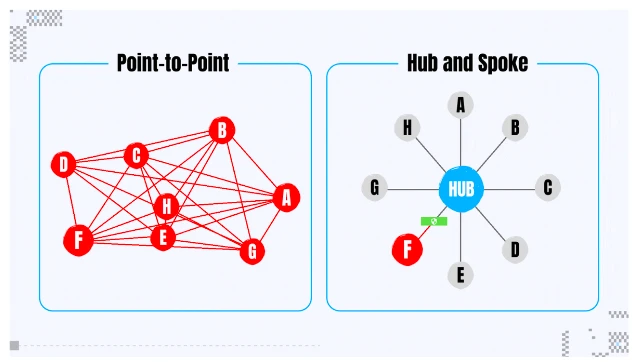Q: In a burgeoning Ethereum ecosystem with new L2 and L3 layers, what does "scalability" mean?
A: Programmable Interoperability - a long word for a simple idea
Cross-chain bridges, despite often having poor user experience and security risks, have become synonymous with blockchain interoperability. A new generation of arbitrary message passing protocols has begun to change this narrative - for example, Chainlink CCIP, LayerZero, Wormhole, and Axelar's General Message Passing.
Now, programmable interoperability is the next step in the cross-chain narrative - at a crucial moment when modular infrastructure such as Celestia and Eigenlayer is emerging, signaling that the Ethereum ecosystem will be more decentralized than ever. With programmable interoperability:
Users on any EVM chain can easily interact with applications and assets on any other chain with just one click.
Providing simple connections for new EVM chains, developers bear low burdens - covering any consensus method (e.g., ZK proof).
These two requirements necessitate not just a sequencer and a bridge. Only a programmable interoperability layer can enable L2-based scaling in applications and blockchains within the Ethereum ecosystem. Axelar has already begun integrating with projects such as Celestia, Eigenlayer, and other key Ethereum ecosystem expansion components (such as Lido and Frax). Together, these projects are building a platform that makes it possible for EVM-compatible applications and other applications to scale quickly and easily.
Axelar is a programmable platform for connecting different blockchains. Through the Axelar virtual machine, cross-chain functionality is automated and abstracted, creating a unified user experience and developer experience across multiple blockchains. This makes the extension of Web3 similar to the extension of SaaS components in Web2.
Abstraction for users. Through general message passing, applications can send any payload and trigger multiple cross-chain function calls, achieving a one-click user experience (UX).
Abstraction for application developers. Cross-chain token services automate the complex tasks involved in managing token supplies across multiple chains.
Abstraction for blockchain developers. Cross-chain amplifiers automate new chain connections, immediately realizing network effects and arbitrary-to-arbitrary interoperability.
Through programmable interoperability, cross-chain connections become simple, seamless, and hidden at the underlying level. Applications built on EVM L2 can scale across the entire Ethereum ecosystem. Developers can "build once, run everywhere."
Architected for Scalability
Axelar connects 56 blockchains, more than any other cross-chain network.

The cross-chain amplifier will accelerate this advantage, enabling hundreds or even thousands of additional blockchains to be connected quickly and easily. The cost of establishing cross-chain connections is high and cannot be reused. The cross-chain amplifier abstracts this complexity for developers: the unified user experience across EVM chains is a plug-and-play component for RaaS (rollup-as-a-service) and RDKs (rollup development kits) to build applications on new L2.
Just 100 blockchains equals approximately 4,950 potential connections. Paired networks can never scale.
For an ecosystem composed of hundreds (let alone thousands) of blockchains, a hub-and-spoke topology is needed. Every new connection immediately gains one-hop routes to any other connected chain - the shortest path to achieving scalability!

"Kubernetes for Web3"
The Axelar Virtual Machine (AVM) is a fully-featured, Turing-complete state machine that provides a naturally multi-chain programmable environment. It allows applications to provide a unified user experience across multiple chains - minimizing the workload for developers.
For more information about AVM, please visit here;
AVM has two main components:
The cross-chain amplifier allows developers to establish connections to the Axelar network without permission. The end result is scalable cross-chain technology that can adapt to the future development of the network layer.
The cross-chain Maestro allows developers to scale quickly with minimal additional effort. Its motto is "build once, run everywhere" - a Kubernetes for Web3.
Recently, the first component of the cross-chain Maestro went live on the mainnet: Inter-Blockchain Token Service (ITS) automates the creation and management of cross-chain tokens moving across multiple chains, with native fungibility and customizable features. Learn more about cross-chain tokens or try the no-code portal yourself: create a cross-chain token and win 10,000 AXL.
This is just the beginning of the cross-chain narrative. 🦾
免责声明:本文章仅代表作者个人观点,不代表本平台的立场和观点。本文章仅供信息分享,不构成对任何人的任何投资建议。用户与作者之间的任何争议,与本平台无关。如网页中刊载的文章或图片涉及侵权,请提供相关的权利证明和身份证明发送邮件到support@aicoin.com,本平台相关工作人员将会进行核查。




